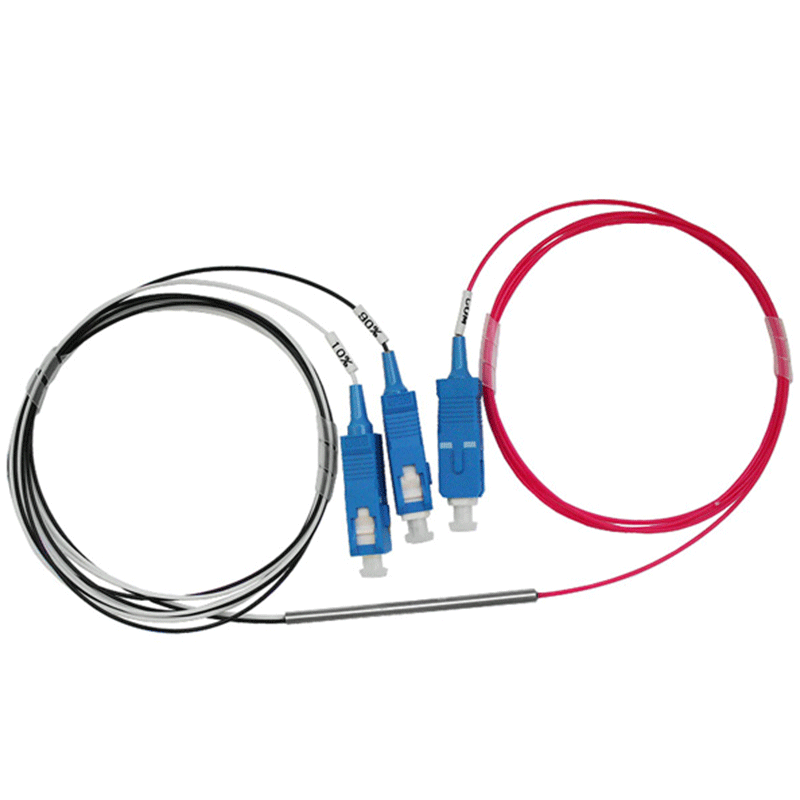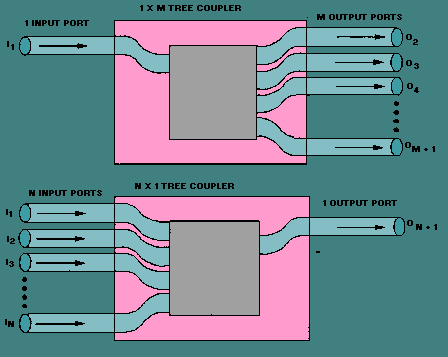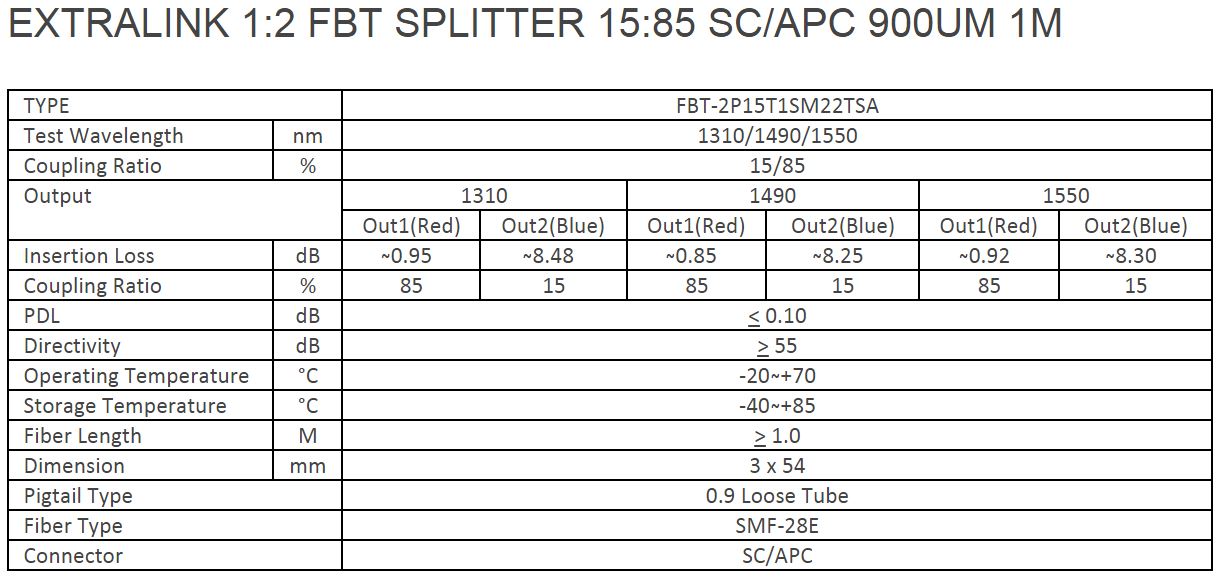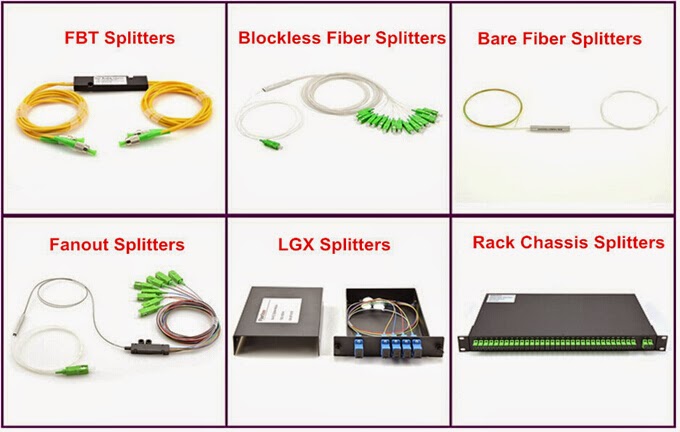What is the Usual Fiber Splitter Types:FBT (Fused Biconical Taper) splitter and PLC (Planar Lightwave Circuit) splitter.
FBT Fiber Optic Splitter
FBT is the traditional technology in which two fibers are placed closely together and fused together by applying heat while the assembly is being elongated and tapered. A signal source is used to determine the point at which the desired coupling ratio has been met, which then stops the process. For the fused optical splitter, It can be divided into different ratios. such as 50/50 if the split is even, or 90/100 if 90% of the signal goes to one side and only 10% to the other.

As this technology has been developed over time, the quality of FBT splitters is very good and they can be deployed in a cost-effective manner. FBT splitters are widely accepted and used in passive networks, especially for instances where the split configuration is smaller (1×2, 1×4, etc).

A drawback of this technology occurs when larger split configurations (1×16, 1×32, 1×64, etc) are required. FBT technology is limited in the number of quality splits that can be achieved in a single instance, so several must be spliced together when a larger split configuration is required. As a result, the physical size increases due to multiple splitters, along with the excess loss from the splices. Thus, for these instances, PLC splitter are more ideal as we will discuss in the next section.

Advantages
- The product is well-known and is easy to produce, thus reducing cost of production.
- Splitter ratios can be customized.
- Can work on three different operating bands (850nm, 131 Onm, and 1550nm).
Disadvantages
- Restricted to its operating wavelength.
- Because of errors in equality insertion loss, the maximum insertion loss will vary depending on the split and increase substantially for those splits over 1:8.
- Because an exact equal ratio cannot be ensured, transmission distance can be affected.
- High temperature dependent loss (TDL). The operating temperature range is 23 °F- 167 °F. Any changes in temperature can affect the insertion loss.
- The larger the split, the larger the encapsulation module.
- Susceptible to failure due to extreme temperatures or improper handling.

PLC Fiber Optic Splitter
Planar Lightwave Circuit splitters, which base on the more recent Planar Lightwave Circuit technology, offer a better solution for applications where larger split configurations are required.
They support wavelengths from 1260 to 1650 nm, a wide range appropriate for wavelength adjudication. Besides, the temperature range (-40 to 85 ℃)is workable for PLC splitters, allowing for their utilization in extreme climate. In addition, the signals can be split equally due to technology implemented. The drawback comes that PLC splitters are fabricated by using semiconductor technology (lithography, etching, developer technology) production, so it is more difficult and complex to manufacture them. Consequently, the price of PLC splitter itself is higher. A figure of a 1×4 Fiber PLC Splitter with Plastic ABS Box Package is below.

Advantages
- Suitable for multiple operating wavelengths (1260nm – 1650nm); unstinted.
- Equal splitter ratios for all branches.
- Compact configuration; smaller size; small occupation space.
- Good stability across all ratios.
- High quality; low failure rate.
Disadvantages
- Complicated production process.
- Costlier than the FBT splitter in the smaller ratios.

FBT splitters and PLC splitters have found their ways in passive optical networks with the rapid growth in FTTX networks. In Fiberstore, you can find PLC splitters with standard LGX and ABS box package, as well as FBT coupler splitters with single, dual and three windows for PON system. Please visit Fiberstore for more information about optical splitters.


.png)